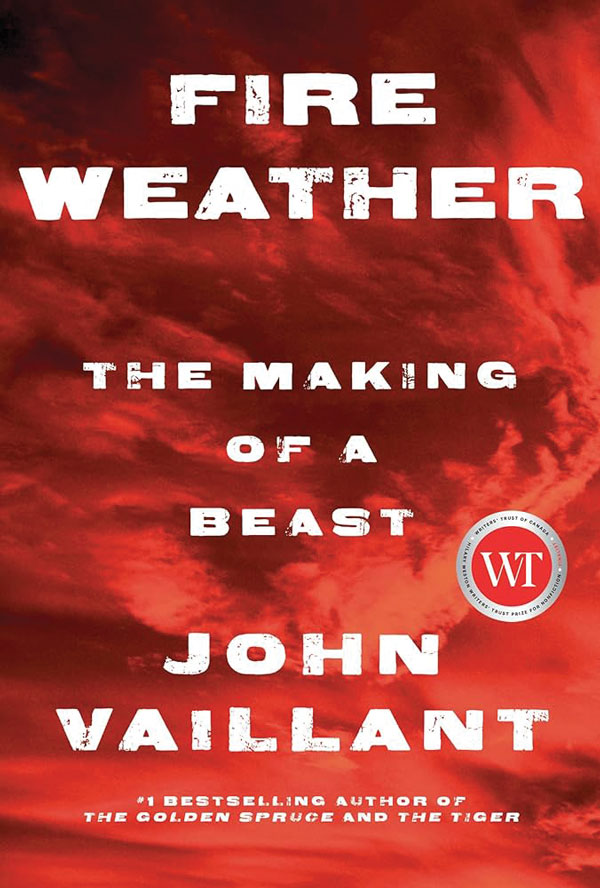The 2023 wildfire season was the worst in Canada’s recorded history. In his timely book Fire Weather: The Making of a Beast, John Vaillant argues this will be “the Century of Fire.” Albertans should take heed: the province is in the fire’s crosshairs, with half of Alberta covered by boreal forest, an ecosystem designed to burn.
Fire Weather weaves together the gripping story of the Fort McMurray fire in May 2016, the science of urban and forest fires, and the links between the oil and gas industry and climate change. Vaillant offers that the thread among all three is our fascination with combustion, calling our species Homo flagrans—burning man.
Through interviews, Vaillant pieces together a detailed chronology of the Fort McMurray fire. He captures the terrifying experience of evacuees “inside their vehicles, which had now become fire shelters in addition to escape pods.” They were “trapped in a corridor of fire, inching forward at the pace of a Tim Hortons drive-through,” keeping a nervous eye on the “dashboard thermometers […] indicating temperatures that had likely never been registered in a vehicle with live occupants.” He also describes the disorienting and surreal experience of the first responders who stayed behind. “Between their disappearance and the smoke,” writes Vaillant of the stores and other landmarks that had burned to the ground, “Palmer was becoming a stranger in his own hometown.”
The narrative is filled with sensory experiences—the sights, smells and sounds—of the fire. “It was impossible to hear anything over the growing roar of the fire,” Vaillant writes. “The unremitting din was further intensified by the constant snap and crack of sundering timber—trees and houses alike—and by the sporadic explosions of electrical transformers and fuel tanks.”
All of this is told in evocative prose. The boreal forest is “a green wreath crowning the globe,” the fire surrounding evacuating cars is “fists of heat pound[ing] the windows,” and Fort McMurray is “an island of industry in an ocean of trees.” The result is a gripping narrative that transports readers to the disaster.
The author’s admiration for Albertans, and Fort Mac residents in particular, shines through. “Fort McMurray’s inhabitants are competent, good-hearted and opti-mistic,” writes Vaillant, “but they are also totally dependent on an eighteenth-century business model.” The author makes a convincing case that the oil and gas industry is coming to an end. “It isn’t the supply that’s crashing,” he explains, rather, “it’s our atmosphere’s ability to absorb the market’s ‘success.’ ” He is critical of Alberta politicians who have failed to heed the signs and, in refusing to pivot the province’s economy, have let down the very people they claim to support.
While Edward Struzik’s 2019 book Firestorm focused on our 50-year policy of fire suppression and our increasing incursions into natural spaces as the culprit for the accelerating frequency and intensity of forest fires, Vaillant points to climate change. Fire weather, the book’s namesake, is a combination of factors that predict the likelihood of fires. In Alberta, climate change is shifting all of them in fire’s favour.
Vaillant builds a solidly argued case that our fascination with combustion has caused the climate to change. “This is not planet Earth as we found it,” he writes. “This is a new place—a fire planet we have made, with an atmosphere more conducive to combustion than at any time in the past three million years.”
Ominously, Vaillant concludes that the stories shared by Fort McMurray evacuees, who he argues were among the first climate change refugees, were not “glimpses of a frightening and aberrant event outside normal time.” Rather, “those articles, posts and photos were messages from the near future.”
Annie Prud’homme Généreux teaches science writing at UBC.
_______________________________________
Click here to sign up for our free online newsletter.


